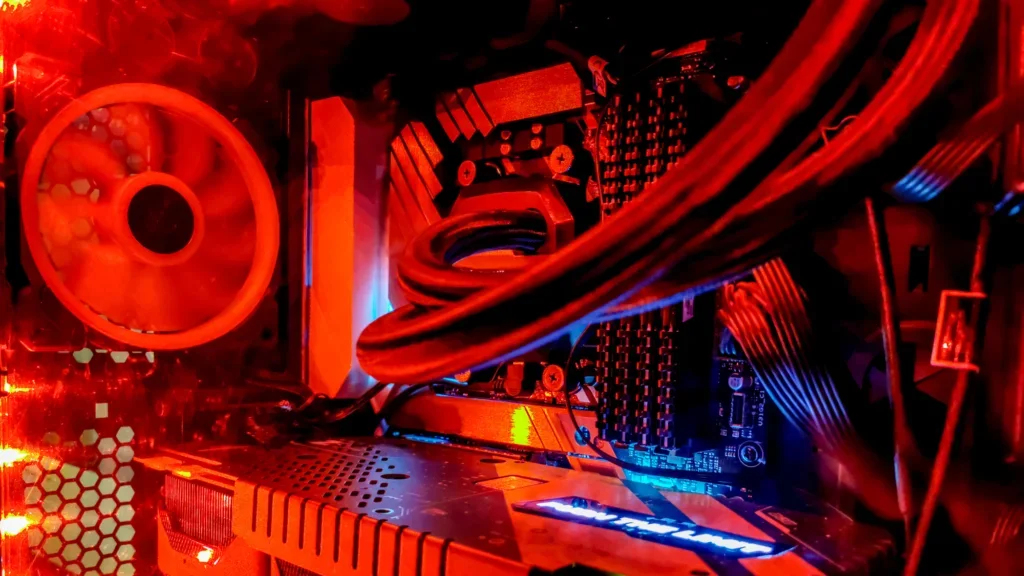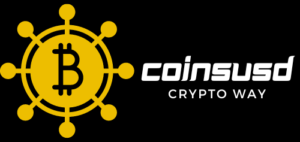Brief Overview of Web3 and Gaming
Table of Contents

Web3 and Its Relevance to the Gaming Industry
Web3 represents the next evolution of the internet. Unlike the current Web2, which relies on centralized servers and companies to store and manage data, Web3 uses blockchain technology to create a decentralized and user-controlled web. In Web3, data and assets are distributed across a network of computers, giving users more control over their digital identities and belongings.
In the gaming industry, Web3 introduces new possibilities by decentralizing the way games are created, played, and monetized. It shifts power from game developers and publishers to the players themselves, allowing them to truly own their in-game assets and have a say in the game’s development and governance.
The Concept of Blockchain and NFTs in Gaming
Blockchain is the underlying technology that makes Web3 possible. It is a secure and transparent digital ledger that records transactions across multiple computers so that the record cannot be altered retroactively. This ensures that all data and transactions are verifiable and tamper-proof.
Non-fungible tokens (NFTs) are a special type of digital asset stored on a blockchain. Unlike cryptocurrencies like Bitcoin or Ethereum, which are interchangeable and identical, NFTs are unique and represent ownership of specific items. In gaming, NFTs can be used to represent in-game assets such as characters, skins, weapons, and virtual real estate. This allows players to own, trade, and sell their in-game items just like physical assets.
The purpose of this article is to explore how Web3 is transforming the gaming landscape. We will delve into how play-to-earn models, decentralized ownership of in-game assets, and the integration of NFTs are changing the way games are developed and played. We will also discuss popular Web3 games, the technology behind them, and the benefits for gamers. Whether you’re a casual gamer, a developer, or just curious about the future of gaming, this article will provide valuable insights into the revolutionary changes brought by Web3 and blockchain technology.
1. Understanding Web3 and NFTs in Gaming
What is Web3?
Key Principles of Web3: Decentralization, Blockchain, and User Sovereignty
Web3 is the next phase of the internet, designed to be more decentralized and user-focused. Its key principles include:
- Decentralization: Unlike traditional web models where data is stored on central servers, Web3 uses a network of computers (blockchain) to distribute data. This reduces the control that big tech companies have over information and gives power back to the users.
- Blockchain: A secure and transparent digital ledger that records all transactions across a network of computers. This makes it nearly impossible to alter or tamper with data once it’s been added to the blockchain.
- User Sovereignty: Web3 aims to give users control over their own data and digital assets. Instead of relying on intermediaries, users can interact directly with each other in a secure and verifiable manner.
How Web3 Differs from Traditional Web Models
Traditional web models (Web2) rely on centralized servers and databases controlled by companies. This centralization means that users must trust these companies to handle their data responsibly. In contrast, Web3 uses blockchain technology to decentralize control and enhance security, privacy, and user control. In Web3, users own their data and digital assets, and transactions are transparent and immutable.
Introduction to NFTs
Define Non-Fungible Tokens (NFTs) and Their Unique Characteristics
Non-fungible tokens (NFTs) are unique digital assets stored on a blockchain. Each NFT has distinct information or attributes that set it apart from other tokens, making it irreplaceable or non-fungible. This is different from fungible tokens like Bitcoin, where each token is identical and can be exchanged one-for-one.
How NFTs Function Within the Blockchain Ecosystem
NFTs are created, bought, and sold on blockchain platforms. They represent ownership of digital or physical items, such as art, music, or in-game assets. Each NFT’s ownership history and provenance are recorded on the blockchain, ensuring authenticity and preventing duplication.
Integration of NFTs in Gaming
Explanation of How NFTs Are Used in Games
In gaming, NFTs can represent a wide range of in-game items, such as characters, skins, weapons, and virtual land. These NFTs can be bought, sold, and traded on various marketplaces, giving players true ownership of their in-game assets. This ownership extends beyond the game’s environment, meaning players can take their assets with them or sell them for real-world value.
Benefits of Using NFTs for In-Game Assets
- True Ownership: Players have full control over their in-game items and can sell or trade them as they wish.
- Interoperability: NFTs can be used across different games and platforms, enhancing the gaming experience.
- Monetization: Players can earn real money by selling rare or valuable in-game items.
- Security: Blockchain technology ensures that in-game assets are secure and cannot be duplicated or tampered with.
2. Play-to-Earn Models
What is Play-to-Earn?
Define the Play-to-Earn Model and How It Works
Play-to-earn is a gaming model where players earn real-world rewards for their in-game activities. This can include earning cryptocurrency, NFTs, or other digital assets that can be traded or sold for real money. The play-to-earn model leverages blockchain technology to create a gaming economy where players are rewarded for their time and effort.
The Difference Between Traditional Gaming Economies and Play-to-Earn
In traditional gaming economies, players spend money to buy in-game items and often cannot sell or trade them outside the game. In play-to-earn games, players can earn valuable assets through gameplay and trade or sell these assets on open marketplaces. This creates a more dynamic and rewarding gaming experience where players can potentially make a profit.
Benefits for Gamers
Financial Incentives and Earning Potential
One of the biggest benefits of play-to-earn games is the financial incentive. Players can earn cryptocurrency or NFTs, which have real-world value. This means that time spent playing these games can translate into actual earnings, making gaming not just a hobby but a potential source of income.
Enhanced Engagement and Motivation for Players
Knowing that their efforts can yield financial rewards, players are more motivated and engaged. The play-to-earn model adds a new layer of excitement and purpose to gaming, encouraging players to invest more time and effort into their favorite games.
Popular Play-to-Earn Games
Examples of Successful Play-to-Earn Games
- Axie Infinity: A game where players collect, breed, and battle fantasy creatures called Axies. Players earn tokens that can be traded for cryptocurrency.
- Splinterlands: A digital collectible card game where players earn rewards by winning battles and completing quests. Cards and other assets can be bought, sold, and traded as NFTs.
By understanding Web3, NFTs, and the play-to-earn model, we can see how blockchain technology is revolutionizing the gaming industry, creating new opportunities for players and developers alike.
3. Decentralized Ownership of In-Game Assets
Concept of Decentralized Ownership
How Blockchain Technology Enables Decentralized Ownership
Blockchain technology allows for decentralized ownership by storing data across a distributed network of computers. This means that in-game assets, represented as NFTs, are not controlled by a single entity or game developer. Instead, each asset is uniquely recorded on the blockchain, ensuring its authenticity and ownership.
The Significance of True Ownership for Gamers
True ownership means that players have complete control over their in-game assets. Unlike traditional games where items are tied to a player’s account and can’t be transferred, blockchain-based games allow players to own their assets independently. This gives players the freedom to trade, sell, or use their items across different games and platforms.
Trading and Selling In-Game Assets
Marketplaces and Platforms for Trading NFT Assets
There are several marketplaces where players can trade their NFT assets, such as OpenSea, Rarible, and game-specific markets like Axie Infinity’s marketplace. These platforms enable players to buy, sell, and trade their in-game items with other players, often using cryptocurrency.
Real-World Value of In-Game Items and Assets
In-game items can have significant real-world value. Rare or highly sought-after items can be sold for substantial amounts of money. For example, a rare Axie from Axie Infinity can sell for thousands of dollars. This real-world value adds an exciting dimension to gaming, where virtual achievements can lead to tangible rewards.
Impact on Game Development and Design
How Decentralized Ownership Influences Game Design
Decentralized ownership changes how games are designed and developed. Game developers can create more complex and engaging economies, knowing that players can freely trade and sell their assets. This encourages developers to design games that are fair and rewarding, as players are more likely to invest time and money into games that offer real ownership.
Benefits for Developers and Players
For developers, decentralized ownership can create new revenue streams through transaction fees and increased player engagement. For players, it provides a more rewarding and immersive gaming experience, with the potential to earn real money from their in-game activities.
4. The Technology Behind Web3 Gaming
Blockchain Technology
Basic Explanation of Blockchain and How It Supports Web3 Gaming
A blockchain is a secure and transparent digital ledger that records all transactions across a network of computers. Each transaction is added as a “block” and linked to the previous block, creating a chain. This technology ensures that data is immutable, meaning it cannot be changed or deleted once recorded. In Web3 gaming, blockchain provides the foundation for secure and transparent transactions of in-game assets.
Key Features: Security, Transparency, and Immutability
- Security: Blockchain’s decentralized nature makes it highly secure. Transactions are verified by multiple computers, reducing the risk of fraud and hacking.
- Transparency: All transactions are publicly recorded on the blockchain, ensuring transparency and trust among players.
- Immutability: Once a transaction is recorded on the blockchain, it cannot be altered, ensuring the integrity of in-game assets and ownership records.
Smart Contracts
Define Smart Contracts and Their Role in Gaming
Smart contracts are self-executing contracts with the terms of the agreement directly written into code. In gaming, smart contracts can automate various processes, such as transferring ownership of in-game assets, distributing rewards, and enforcing rules. This automation reduces the need for intermediaries and ensures that transactions are secure and transparent.
Examples of Smart Contract Applications in Games
- Axie Infinity: Uses smart contracts to manage the breeding and trading of Axies, ensuring that transactions are fair and transparent.
- The Sandbox: Employs smart contracts to enable players to create, own, and monetize their gaming experiences on a decentralized platform.
Interoperability and Scalability
Importance of Interoperability Between Different Games and Platforms
Interoperability allows players to use their in-game assets across different games and platforms. This enhances the gaming experience by enabling players to carry their items and achievements from one game to another. Interoperability also encourages collaboration between game developers, creating a more connected and versatile gaming ecosystem.
Solutions for Scalability Issues in Web3 Gaming
As Web3 gaming grows, scalability becomes a critical issue. Solutions like Layer 2 scaling, sidechains, and sharding can help address scalability challenges by increasing the capacity of the blockchain to handle more transactions. These technologies ensure that Web3 games can support a large number of players without compromising performance or security.
5. Popular Web3 Games and Platforms
Axie Infinity
Overview of the Game and Its Play-to-Earn Mechanics
Axie Infinity is a blockchain-based game where players collect, breed, and battle fantasy creatures called Axies. Each Axie is an NFT, meaning it is unique and can be bought, sold, or traded. Players earn rewards by winning battles and completing tasks, which they can exchange for cryptocurrency. This play-to-earn model allows players to make real money while playing the game.
Success Stories and Economic Impact
Axie Infinity has seen remarkable success, with players in some countries earning more from the game than from traditional jobs. For example, many players in the Philippines have used Axie Infinity as a primary source of income, especially during the COVID-19 pandemic. The game has created a vibrant economy, with Axies and in-game items often selling for hundreds or even thousands of dollars.
Decentraland
Description of the Virtual World and Its NFT-Based Economy
Decentraland is a virtual world built on the Ethereum blockchain where players can explore, interact, and create content. The game’s economy is based on NFTs, which represent virtual real estate and other in-game assets. Players can buy, sell, and trade these NFTs, building and monetizing their own virtual experiences.
How Players Can Create, Buy, and Sell Virtual Real Estate
In Decentraland, players can purchase virtual land parcels, each represented by an NFT. They can develop these parcels by building structures, creating games, or hosting events. Once developed, players can sell or rent their virtual properties, creating a dynamic and lucrative real estate market within the game.
The Sandbox
Explanation of the Game’s Concept and User-Generated Content
The Sandbox is a decentralized gaming platform where players can create, own, and monetize their gaming experiences. Using a simple drag-and-drop interface, players can design their own games and virtual worlds. The platform’s economy is based on NFTs, which represent in-game assets like characters, tools, and land.
The Role of NFTs in Enhancing Player Creativity and Ownership
NFTs in The Sandbox allow players to truly own their creations. They can buy, sell, and trade these assets on the marketplace, earning rewards for their creativity. This ownership model encourages players to invest time and effort into creating unique content, knowing they can profit from their work.
6. How Gamers Can Benefit from Web3 Gaming
Financial Rewards
Earning Potential Through Play-to-Earn Models and Asset Trading
Web3 gaming offers significant earning potential. Players can earn cryptocurrency and NFTs through gameplay, which can be traded or sold for real money. The play-to-earn model turns gaming into a viable source of income, providing financial rewards for time and effort spent in the game.
Case Studies of Gamers Who Have Profited from Web3 Games
Many gamers have profited from Web3 games. For instance, players of Axie Infinity have reported earning enough to support their families or pay for education. These success stories highlight the financial opportunities available in the Web3 gaming space.
Enhanced Gaming Experience
Increased Engagement and Personalization
Web3 games offer a more engaging and personalized experience. Players have more control over their in-game assets and can customize their gaming experience to suit their preferences. The ability to own and trade assets adds a new level of depth and investment to gaming.
Long-Term Value and Investment in Gaming Assets
Unlike traditional games where in-game items have no real-world value, Web3 games offer long-term value for assets. Players can invest in rare items or virtual real estate, which can appreciate in value over time. This investment aspect adds a strategic element to gameplay.
Community and Collaboration
Building and Participating in Decentralized Gaming Communities
Web3 games foster strong communities where players collaborate and share governance. Players can participate in decision-making processes, influencing the game’s development and direction. This community involvement creates a sense of ownership and belonging.
Collaborative Opportunities and Shared Governance
Players in Web3 games can collaborate on projects, share resources, and work together to achieve common goals. Shared governance through DAOs (Decentralized Autonomous Organizations) ensures that all players have a voice in the community, promoting fairness and inclusivity.
Conclusion
In this article, we’ve explored how Web3 is revolutionizing the gaming industry. Web3, with its foundations in blockchain technology, brings decentralization and user sovereignty to the forefront, transforming the way games are developed, played, and monetized.
We discussed the following key points:
- Transformative Impact of Web3 on Gaming: Web3 introduces new opportunities for gamers and developers through decentralized ownership and transparent, secure transactions.
- Play-to-Earn Models: These models allow players to earn real-world rewards for their in-game activities, turning gaming into a viable source of income. Gamers can now earn cryptocurrency and NFTs that have tangible value.
- Decentralized Ownership: Gamers can truly own their in-game assets, trade them freely, and benefit from their real-world value. This ownership model enhances the gaming experience and adds a new dimension to how games are played and enjoyed.
The future of Web3 gaming looks promising and full of potential developments. As blockchain technology continues to evolve, we can expect even more innovative games and platforms that leverage the power of decentralization. Interoperability between games, enhanced security, and improved scalability will further enrich the gaming experience.
Players and developers alike should embrace these changes and explore the possibilities that Web3 gaming offers. Whether it’s participating in play-to-earn games, investing in virtual real estate, or joining decentralized gaming communities, there’s something exciting for everyone in this new era of gaming.
We invite you to share your experiences and thoughts on Web3 gaming. Have you tried any play-to-earn games? What do you think about the concept of owning your in-game assets? Your insights and stories can help others understand and appreciate the potential of Web3 gaming.
To dive deeper into the world of Web3 games, here are some resources and platforms to explore:
- Axie Infinity: Axie Infinity
- Decentraland: Decentraland
- The Sandbox: The Sandbox
- OpenSea: OpenSea – A marketplace for trading NFTs.
By exploring these resources, you can gain a deeper understanding of how Web3 is transforming gaming and discover new opportunities to engage with this exciting technology.

